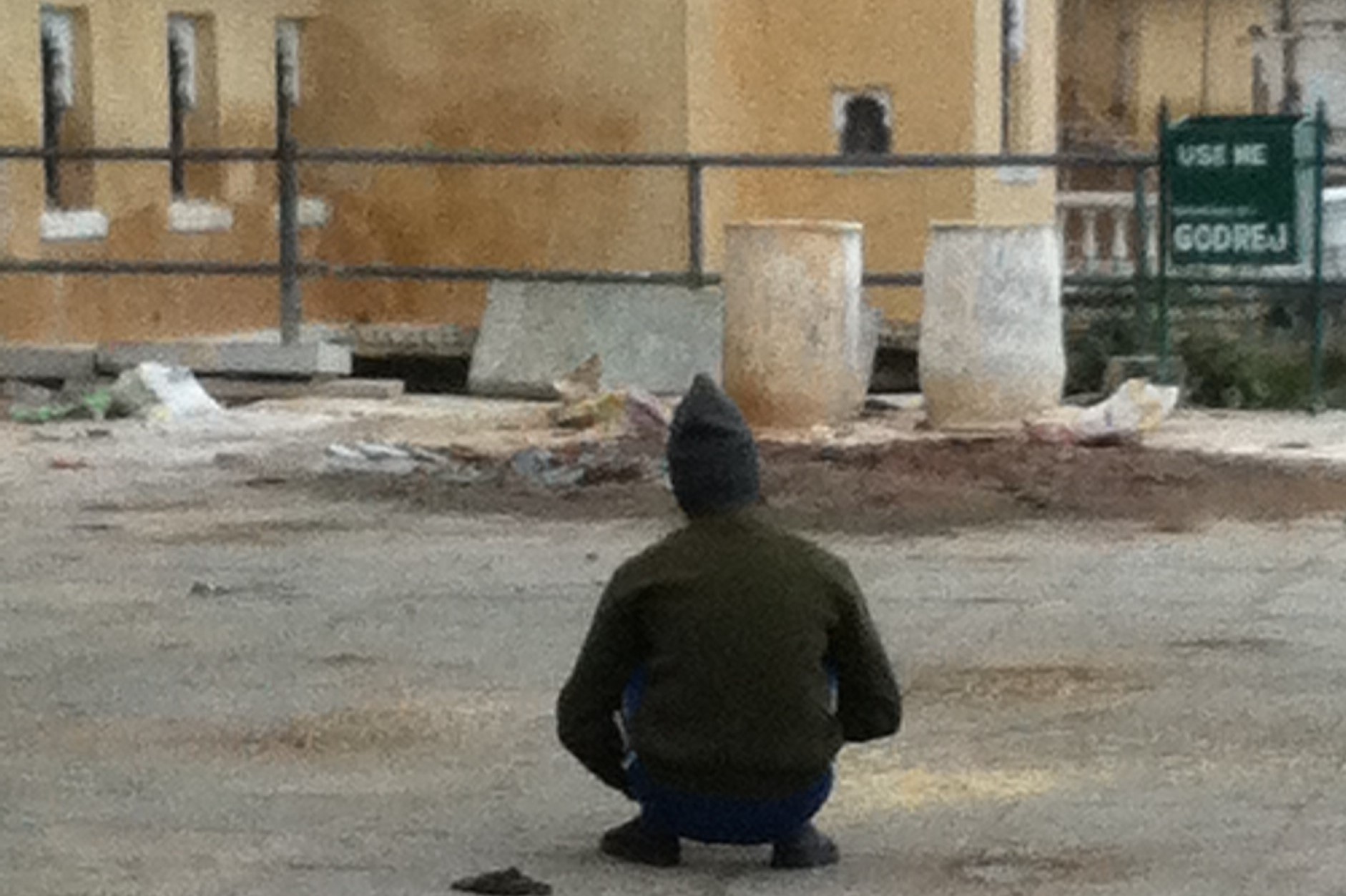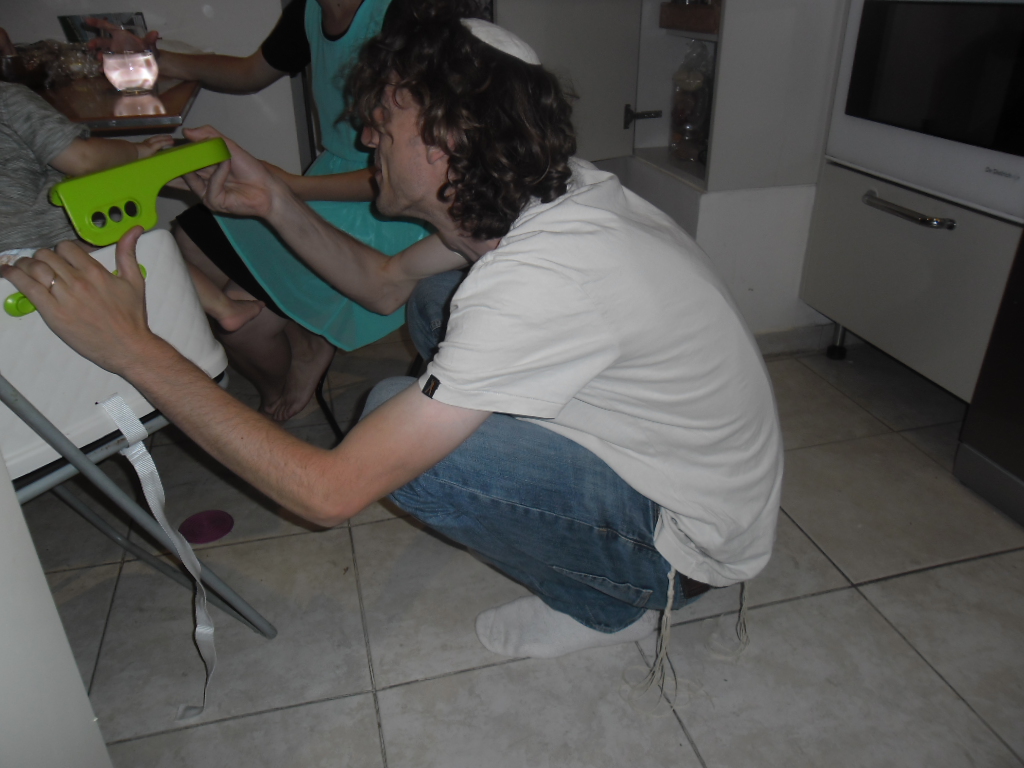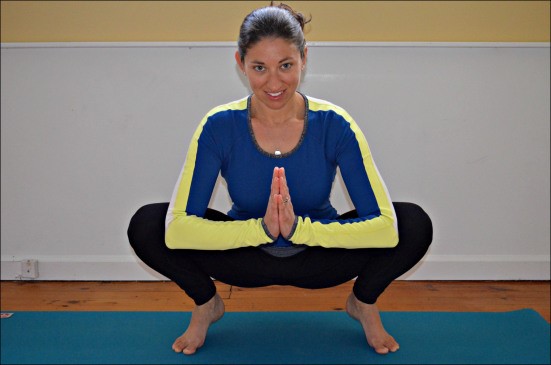

What do the two Rajasthani men (pictured above) and my son-in-law (below) have in common?
 If you think it’s their ability to do the Asian squat better than you and me, you’re only partially correct. What they also have in common is that they are barefoot or in their stocking feet. The cultures with which we associate squatting (often referred to as Asian squatting) are cultures where men and women walk around barefoot or in slippers with no heel much of the time. In western cultures, we shorten our calf muscle and Achilles tendon by wearing heels much of the time. As a result, we lose our ability to bend forward over the foot. See my son in law’s angle of dorsiflexion (bending forward at the ankle) at left. It’s close to 45 degrees.
If you think it’s their ability to do the Asian squat better than you and me, you’re only partially correct. What they also have in common is that they are barefoot or in their stocking feet. The cultures with which we associate squatting (often referred to as Asian squatting) are cultures where men and women walk around barefoot or in slippers with no heel much of the time. In western cultures, we shorten our calf muscle and Achilles tendon by wearing heels much of the time. As a result, we lose our ability to bend forward over the foot. See my son in law’s angle of dorsiflexion (bending forward at the ankle) at left. It’s close to 45 degrees.
In the Asian squat, both heels are on the ground, shoulder width apart, which prevents the knees from coming forward past the toes, reducing unnecessary strain on the knees. My son in law must add some distance between his feet to ease the strain on his knees. His center of gravity is very stable though, explaining his preference for squatting as his rest position and his ability to hold it for long periods of time.
Asian Squat (Rajasthani men, above) vs. Western squat (left, below)
 The position at left is what passes for squatting with some middle aged people in my Yoga class, including me. We can’t dorsiflex so we do the Western squat, with heels raised. We wobble because the position is unstable and not restful so we don’t get the intended benefits of the stretch: balance, opening of hips, elongation of the spine. We would be better off adding a support, planting our feet fully on the ground, finding our center of gravity and enjoying the stretch, like the woman below.
The position at left is what passes for squatting with some middle aged people in my Yoga class, including me. We can’t dorsiflex so we do the Western squat, with heels raised. We wobble because the position is unstable and not restful so we don’t get the intended benefits of the stretch: balance, opening of hips, elongation of the spine. We would be better off adding a support, planting our feet fully on the ground, finding our center of gravity and enjoying the stretch, like the woman below.

Women and Squatting Limitations: Physiology or Fashion?
In a culture where women wear heels, they have probably shortened their calf muscles and their Achilles tendons. The shortened Achilles tendon is the main factor preventing dorsiflexion, or flexing of the foot upwards. If the dorsiflexion isn’t there, you’re just not going to be able to get that heel down.
Even if a woman is extremely flexible, she might not be able to get the angle between her shin and the floor to anywhere near the 45 degrees of the Asian Squat. If she wears heels and has shortened her Achilles tendon, she’ll have to stretch it out for a few months before she can enjoy the Asian squat as a rest position.
Alternate Heel Height Every Day
To avoid shortening the Achilles tendon and tight calf muscles, it’s important to wear shoes with a different height heel every day. Anything that raises the height of the back of your foot above the height of the ball of your foot is considered a heel. Sorry. And stretch, stretch, stretch.



 I have been helping people to sit and move comfortably since 1998. I am always looking for ways to help people improve their relationships with their bodies.
I have been helping people to sit and move comfortably since 1998. I am always looking for ways to help people improve their relationships with their bodies.